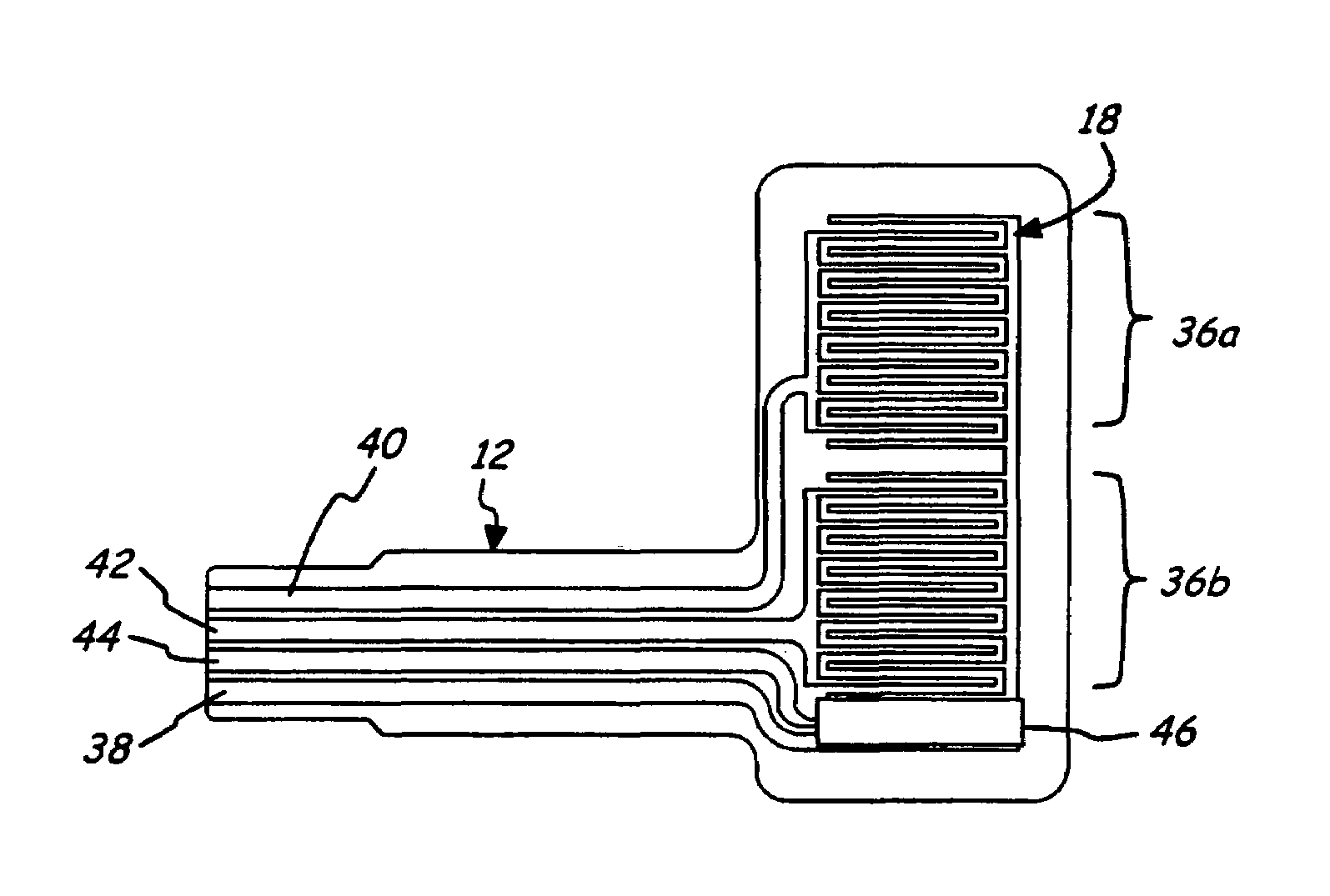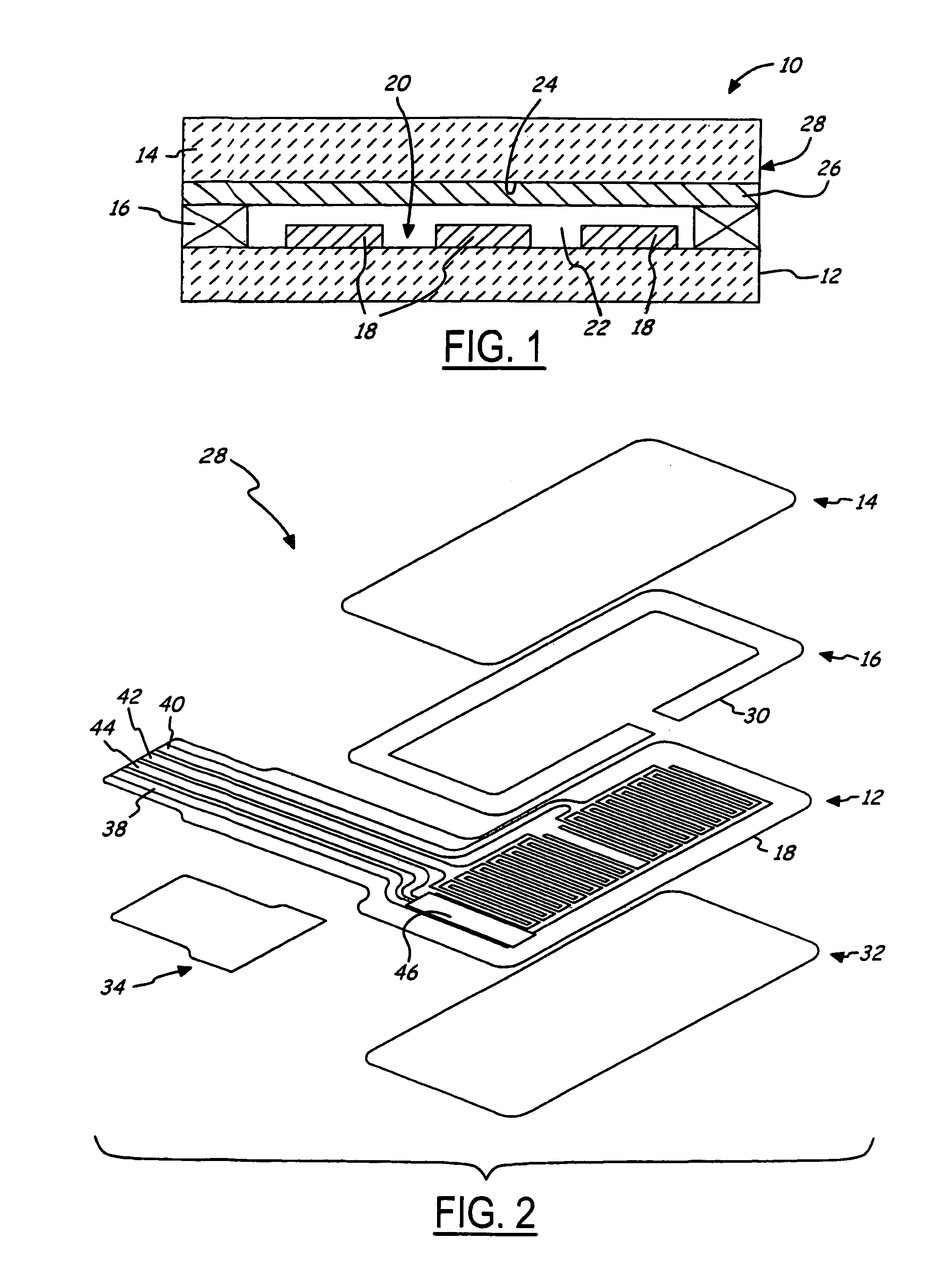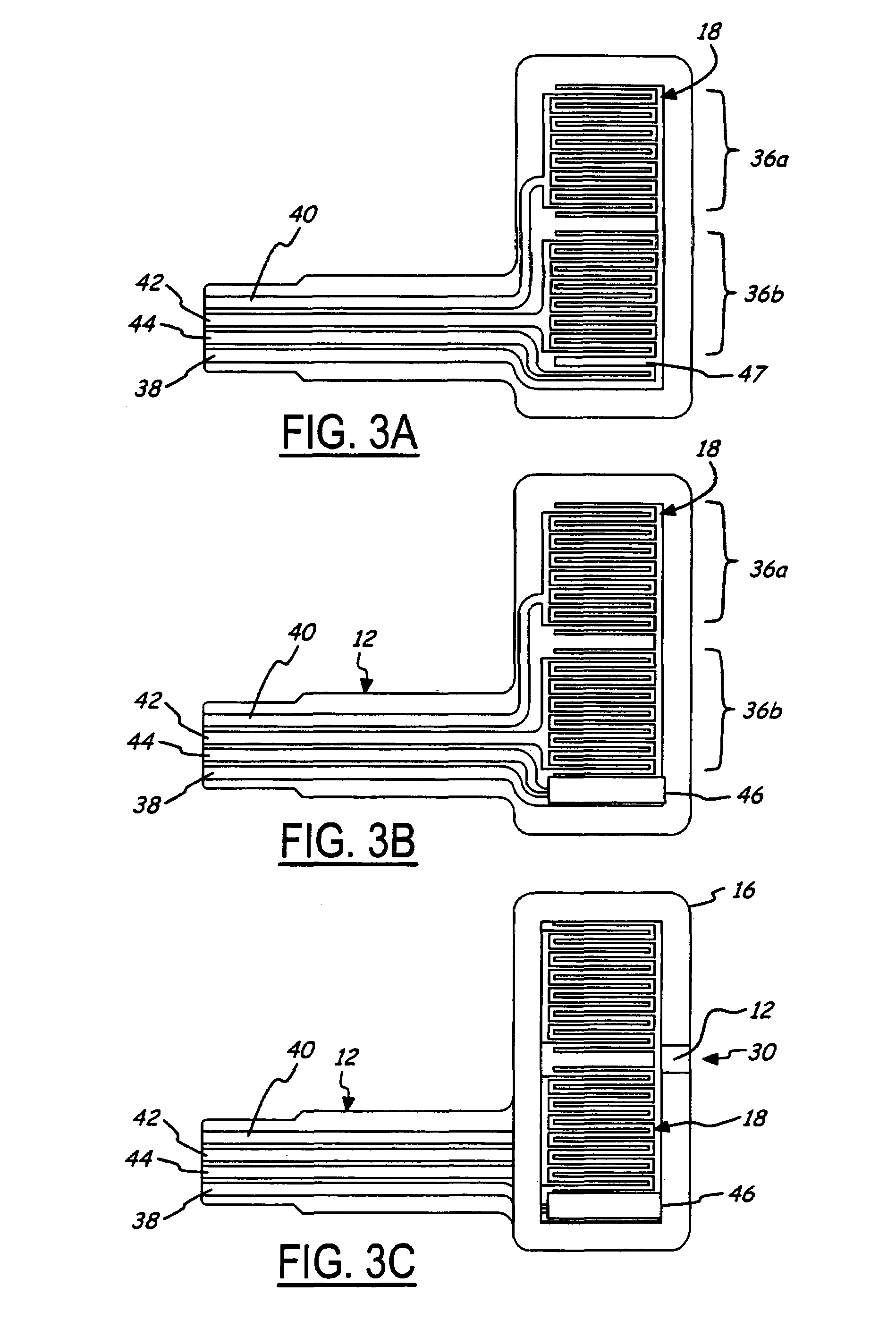Force sensing resistor with calibration element and method of manufacturing same
a technology of force sensing resistor and calibration element, which is applied in the direction of force measurement, instruments, computing, etc., can solve the problems of limiting the usefulness of the fsr to situations, and the tolerance of manufacturing between the fsrs of pressure transducers manufactured over time may be +/25%
- Summary
- Abstract
- Description
- Claims
- Application Information
AI Technical Summary
Benefits of technology
Problems solved by technology
Method used
Image
Examples
Embodiment Construction
)
[0039]Referring now to FIG. 1, a cross-sectional view of a pressure sensitive transducer 10 having a force sensing resistor (FSR) in accordance with the present invention is shown. Pressure transducer 10 produces an electrical signal indicative of applied pressure. Pressure transducer 10 generally includes a first flexible substrate 12, a second flexible substrate 14, and a spacer 16. Flexible substrates 12 and 14 are individual portions obtained from the same flexible sheet of material such as, for example, Mylar. In response to one of substrates 12 and 14 being touched by an actuator or finger, this substrate deforms and moves toward the other one of the substrates. For example, second substrate 14 deforms and moves inward toward first substrate 12 in response to being touched.
[0040]Electrically conductive traces 18 are formed on first substrate 12 to define contact area 20. Spacer 16 attaches first and second substrates 12 and 14 together in such a manner that the substrates are...
PUM
 Login to View More
Login to View More Abstract
Description
Claims
Application Information
 Login to View More
Login to View More - R&D
- Intellectual Property
- Life Sciences
- Materials
- Tech Scout
- Unparalleled Data Quality
- Higher Quality Content
- 60% Fewer Hallucinations
Browse by: Latest US Patents, China's latest patents, Technical Efficacy Thesaurus, Application Domain, Technology Topic, Popular Technical Reports.
© 2025 PatSnap. All rights reserved.Legal|Privacy policy|Modern Slavery Act Transparency Statement|Sitemap|About US| Contact US: help@patsnap.com



